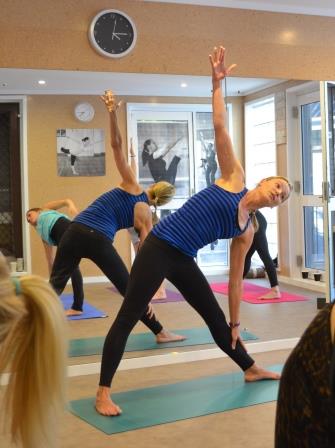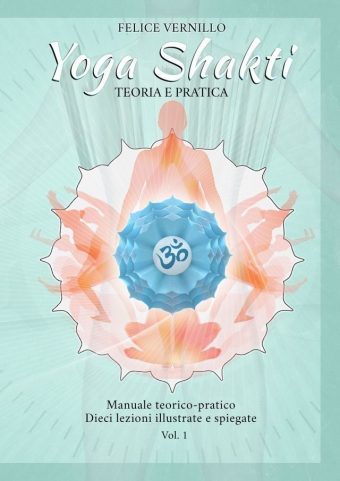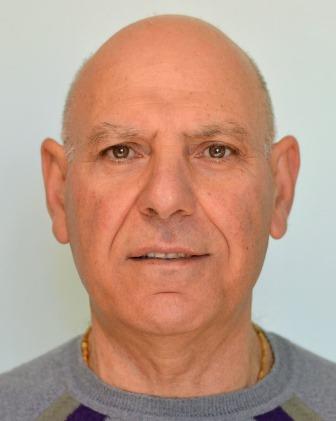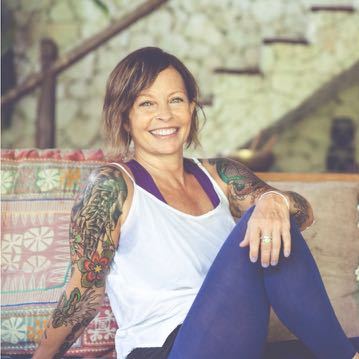
Article courtesy of Master Yoga Teacher Felice Vernillo
Founder and owner
www.shaktiyoga.it
Given that in an emergency condition such as the one related to COVID19 in which contact between people was not allowed, using the web it was a valid alternative.
However, once the emergency is over, the exception represented by online teaching cannot be considered a substitute for normality, i.e. teaching in presence, especially with regard to technical and practical disciplines such as yoga, which is defined as being 90% practical and 10% theoretical.
Following online trainings from own computer is definitely a comfort and a saving in terms of economic resources (travel, gasoline) and time of course. However, we understand the advantages and disadvantages of this type of training. Before considering it the solution to all problems, it is certainly wise to compare advantages and disadvantages.
Given that in an emergency condition such as the one related to COVID19 in which contact between people was not allowed, using the web it was a valid alternative.
E-learning is an on-line learning where, thanks to the use of multimedia technologies and the internet, professional training courses are carried out. Access to resources and services is simplified by digital tools and remote connection.
This is where distance learning was born. The term distance learning is often used in a generic way to identify a type of training and teaching that is implemented, precisely, at a distance or where there is no sharing of space and physical interaction between teacher and students, but everything is mediated by the use of technological means.
If there are many advantages, there are as many disadvantages or rather limits. First of all, “lecturing” through technology cancels out the dimension of teacher-student interaction and among the students themselves. Especially if the lessons are pre-recorded, this becomes even more significant because the student is alone, isolated in the learning process.
Even when the lesson is live online, important elements that animate the vis à vis lesson (face-to-face are missing: first of all human contact and direct communication, made not only of words and listening but of gestures, expressions and facets that make the difference in the learning process and in the understanding of the contents.
With the use of technology the possibility of interaction and confrontation is less direct, slower and often leads to losing some important elements of growth. Especially for beginners compared to the yoga discipline, where contact with the teacher is essential for learning from the technical point of view and personal growth.
The use of media is very complex and may not be very functional if not well used. Especially if the online lesson is pre-recorded you may have difficulties in concentration and understanding, often due to the monotone of the voice, respect for the timing of the various phases during practice.
All things that in the frontal lesson the teacher can consider and grasp from the signals he receives from the students. Another substantial disadvantage is linked to the impossibility of exploiting the ties that are created with fellow students, certainly a source of wealth and important confrontation, from which relationships and exchanges of ideas and support can arise with respect to each other’s motivations.
Teaching online has its advantages:
– No need to have a dedicated place with related management costs
– Time and cost savings for travel
– Independence from collaborations with non-owned structures
– Reaching students beyond the area of residence
However, it should be emphasized that it is impossible for the teacher to observe each student three-dimensional view, from direct experience, the teacher only sees one screen during teaching, with the consequent impossibility to make corrections to support the student’s practice during the lesson. This produces for the teacher a teaching “in the dark”, while in the student insecurity, not feeling protected by the watchful gaze and presence of the teacher
Advantages and disadvantages in online yoga lessons
–Advantage: Be able to practice when and from where you want
–Disadvantage: You do not use a place, the yoga room, created and equipped for the specific discipline
-Advantage: greater flexibility
–Disadvantage: Need for self-discipline (Only direct relationship with a specialized center and a qualified teacher can develop discipline) – Impractical mode for lazy or depressed people.
-Advantage: You can follow different styles with different teachers
–Disadvantage: Many styles end up confusing, one finds oneself practicing without a defined and structured line (Many styles, equal to no style). Mixing different modes does not bring results.
-Advantage: practicing at home
–Disadvantage: The practice at home is subject to the interference of cohabitants and does not facilitate psychological detachment from family commitments.
-Advantage: Saving money (travel and yoga lessons fees)
-Disadvantage: You spend less to get little or nothing
Attending an online course rather than a class in a yoga centre is NOT THE SAME. However, one does not exclude the other. The integration of face-to-face classes in a yoga centre, with live or recorded online classes held by your teacher, makes yoga practice more consistent, safe, stimulating and effective.
Summary the main tips for a safe approach with the yoga discipline
1-Do not start practicing yoga through an online course, learn first from a teacher in a qualified yoga centre, from a certified teacher.
2- Try different methodologies in order to then choose one and follow only that choice, only in this way will you get real and profound results.
3- Use online lessons only as a support to face-to-face lessons
4- Do not choose online courses that offer different methodologies from the one you are practicing with your usual teacher, the ideal is to follow videos produced by your own teacher.
Professional training courses for yoga teachers on-line
All the considerations and conclusions made for classroom teaching compared to online teaching are even more valid for training courses, specifically for yoga teacher training courses. In Italy and the rest of the world, among the unregulated professions is the teaching of yoga, this means that anyone can be called “yoga teacher”.
But what many people do not know is that there is no difference in title between a teacher who has trained at a school that provides years of training and study, and that of the aspiring teacher who without any practice decides to enrol in a teacher training that allows you to become a teacher in a very short time, for example a few weekends, or even completely online.
Moreover, since no governmental or para-governmental Yoga organizations exist in any country in the world today, it is important to keep in mind that they have never been established, by national laws of any country in the world and/or by international agreements, true Professional Standards for training and teaching courses in Yoga discipline.
Absence of a Global Yoga Governing Body
In the absence of a global reference legislation, between 1999 and 2013 were born the Yoga Alliance organizations including the prominent ones: Yoga Alliance (International Australia), Yoga Alliance (International/Italy), Yoga Alliance Professionals UK, the Canadian Yoga Alliance and Yoga Alliance (USA), without any constraint of exclusive representation, to enhance the skills of members and ensure compliance with ethical rules, with the aim of facilitating the choice and protection of users.
The public registry of each Yoga Alliance are useful for consumers to verify the credentials of the teachers they rely on for training courses or yoga lessons. It’s recent news of the emergence in the U.S. of a market for training courses for yoga teachers online, by unscrupulous private organizations, which to the detriment of young and not-so-young users, promise an illusory training at low cost.
For this reason it is absolutely necessary to undertake a serious work of information to protect consumers against uses and abuses in the form of real scams.


